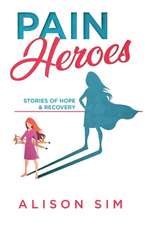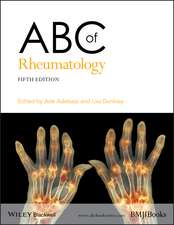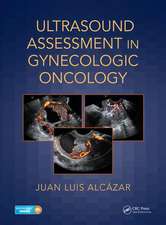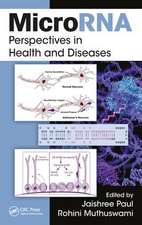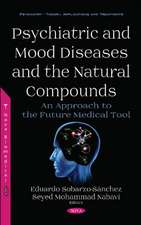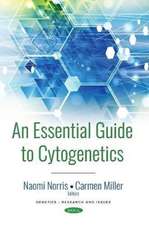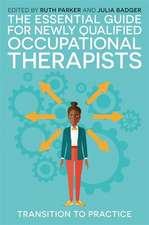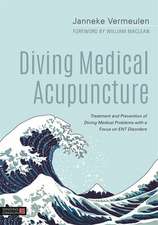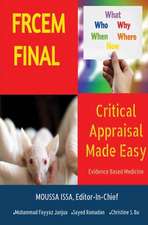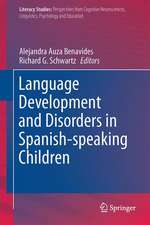Handbook of Child Language Disorders: 2nd Edition
Editat de Richard G. Schwartzen Limba Engleză Paperback – 24 feb 2017
This second edition of the Handbook of Child Language Disorders brings together a distinguished group of clinical and academic researchers who present novel perspectives on researching the nature of language disorders in children. The handbook is divided into five sections: Typology; Bases; Language Contexts; Deficits, Assessment, and Intervention; and Research Methods. Topics addressed include autism, specific language impairment, dyslexia, hearing impairment, and genetic syndromes and their deficits, along with introductions to genetics, speech production and perception, neurobiology, linguistics, cognitive science, and research methods. With its global context, this handbook also includes studies concerning children acquiring more than one language and variations within and across languages.
Thoroughly revised, this edition offers state-of-the-art information in child language disorders together in a single volume for advanced undergraduate students and graduate students. It will also serve as a valuable resource for researchers and practitioners in speech-language pathology, audiology, special education, and neuropsychology, as well as for individuals interested in any aspect of language acquisition and its disorders.
| Toate formatele și edițiile | Preț | Express |
|---|---|---|
| Paperback (1) | 916.62 lei 6-8 săpt. | |
| Taylor & Francis – 24 feb 2017 | 916.62 lei 6-8 săpt. | |
| Hardback (1) | 2235.42 lei 6-8 săpt. | |
| Taylor & Francis – 20 feb 2017 | 2235.42 lei 6-8 săpt. |
Preț: 916.62 lei
Preț vechi: 1117.83 lei
-18% Nou
Puncte Express: 1375
Preț estimativ în valută:
175.45€ • 190.64$ • 147.47£
175.45€ • 190.64$ • 147.47£
Carte tipărită la comandă
Livrare economică 21 aprilie-05 mai
Preluare comenzi: 021 569.72.76
Specificații
ISBN-13: 9781848725966
ISBN-10: 1848725965
Pagini: 674
Ilustrații: 7 black & white tables
Dimensiuni: 178 x 254 x 40 mm
Greutate: 1.18 kg
Ediția:2nd edition
Editura: Taylor & Francis
Colecția Psychology Press
Locul publicării:Oxford, United Kingdom
ISBN-10: 1848725965
Pagini: 674
Ilustrații: 7 black & white tables
Dimensiuni: 178 x 254 x 40 mm
Greutate: 1.18 kg
Ediția:2nd edition
Editura: Taylor & Francis
Colecția Psychology Press
Locul publicării:Oxford, United Kingdom
Cuprins
Part I: Typology of Child Language Disorders
1. Specific Language Impairment: Richard G. Schwartz
2. Language Disorders in Children with Intellectual Disability of Genetic Origin: Andrea McDuffie, Angela John Thurman, Marie Moore Channell, and Leonard Abbeduto
3. Autism Spectrum Disorders: Joanne Gerenser and Karece Lopez
4. Hearing Loss: Zara Waldman DeLuca and Miranda Cleary
5. Dyslexia: Sally E. Shaywitz and Bennett A. Shaywitz
Part II: Bases of Child Language Disorders
6. Linguistics in Child Language Disorders: Richard G. Schwartz, Irena Botwinik-Rotem, and Naama Friedmann
7. Neurobiology of Child Language Disorders: Baila Epstein and Richard G. Schwartz
8. Working Memory in Child Language Disorders: Ronald B. Gillam, James W. Montgomery, Sandra L. Gillam, and Julia L. Evans
9. Perception and Production in Child Language Disorders: Jan Edwards and Benjamin Munson
10. Genetics of Child Language Disorders: J. Bruce Tomblin
11. Model-Based Approaches to Child Language Disorders: Marc F. Joanisse
Part III: Language Contexts of Child Language Disorders
12. Bilingualism and Child Language Disorders: Elizabeth D. Pena, Lisa M. Bedore, and Alisa Baron
13. Cross-Linguistic Studies of Child Language Disorders: Laurence B. Leonard
14. African American English and Child Language Disorders: Brandi L. Newkirk-Turner and Lisa Green
Part IV: Deficits, Assessment, and Intervention in Child Language Disorders
15. Morphosyntax in Child Language Disorders: Janna B. Oetting and Pamela A. Hadley
16. Semantics in Child Language Disorders: Karla K. McGregor
17. Syntax In Child Language Disorders: Paul Fletcher And Pauline Frizelle
18. Pragmatics and Social Communication in Child Language Disorders: Martin Fujiki and Bonnie Brinton
19. Reading and Writing in Child Language Disorders: Pamela E. Hook and Charles W. Haynes
20. Processing Speed, Attention, and Perception in Child Language Disorders: Jennifer Windsor
Part V: Research Methods in Child Language Disorders
21. Language Production Approaches to Child Language Disorders: Liat Seiger-Gardner and Diana Almodovar
22. Language Comprehension Approaches to Child Language Disorders: Patricia Deevy
23. Translational and Implementation Research in Child Language Disorders: Lizbeth H. Finestack and Marc E. Fey
24. Neuroscience Approaches to Child Language Disorders: Valerie L. Shafer, Emily R. Zane, and Nathan D. Maxfield
Author Index
Subject Index
1. Specific Language Impairment: Richard G. Schwartz
2. Language Disorders in Children with Intellectual Disability of Genetic Origin: Andrea McDuffie, Angela John Thurman, Marie Moore Channell, and Leonard Abbeduto
3. Autism Spectrum Disorders: Joanne Gerenser and Karece Lopez
4. Hearing Loss: Zara Waldman DeLuca and Miranda Cleary
5. Dyslexia: Sally E. Shaywitz and Bennett A. Shaywitz
Part II: Bases of Child Language Disorders
6. Linguistics in Child Language Disorders: Richard G. Schwartz, Irena Botwinik-Rotem, and Naama Friedmann
7. Neurobiology of Child Language Disorders: Baila Epstein and Richard G. Schwartz
8. Working Memory in Child Language Disorders: Ronald B. Gillam, James W. Montgomery, Sandra L. Gillam, and Julia L. Evans
9. Perception and Production in Child Language Disorders: Jan Edwards and Benjamin Munson
10. Genetics of Child Language Disorders: J. Bruce Tomblin
11. Model-Based Approaches to Child Language Disorders: Marc F. Joanisse
Part III: Language Contexts of Child Language Disorders
12. Bilingualism and Child Language Disorders: Elizabeth D. Pena, Lisa M. Bedore, and Alisa Baron
13. Cross-Linguistic Studies of Child Language Disorders: Laurence B. Leonard
14. African American English and Child Language Disorders: Brandi L. Newkirk-Turner and Lisa Green
Part IV: Deficits, Assessment, and Intervention in Child Language Disorders
15. Morphosyntax in Child Language Disorders: Janna B. Oetting and Pamela A. Hadley
16. Semantics in Child Language Disorders: Karla K. McGregor
17. Syntax In Child Language Disorders: Paul Fletcher And Pauline Frizelle
18. Pragmatics and Social Communication in Child Language Disorders: Martin Fujiki and Bonnie Brinton
19. Reading and Writing in Child Language Disorders: Pamela E. Hook and Charles W. Haynes
20. Processing Speed, Attention, and Perception in Child Language Disorders: Jennifer Windsor
Part V: Research Methods in Child Language Disorders
21. Language Production Approaches to Child Language Disorders: Liat Seiger-Gardner and Diana Almodovar
22. Language Comprehension Approaches to Child Language Disorders: Patricia Deevy
23. Translational and Implementation Research in Child Language Disorders: Lizbeth H. Finestack and Marc E. Fey
24. Neuroscience Approaches to Child Language Disorders: Valerie L. Shafer, Emily R. Zane, and Nathan D. Maxfield
Author Index
Subject Index
Notă biografică
Richard G. Schwartz is a Presidential Professor in the Ph.D. Program in Speech-Language-Hearing Sciences at the Graduate Center of the City University of New York.
Recenzii
'The Handbook of Child Language Disorders masterfully brings together carefully written state-of-the-art chapters on diverse language disorders and their phenotypes, etiologies, and intervention methods. Its interdisciplinary scope, ranging from genetics and neurobiology to linguistics, and its unique focus on behavioural and neuroscientific research methods and multilingual acquisition contexts make it an invaluable resource for students, seasoned researchers, and practitioners alike.' - Vicky Chondrogianni, University of Edinburgh, UK
'Richard Schwartz has assembled a remarkable array of researchers to provide a deep, clinically trenchant, and wonderfully nuanced account of children with language disorders. The Handbook of Child Language Disorders is a must-read for students, clinicians, and researchers interested in understanding the underlying bases of language disorders in children, and in their instantiation across diagnostic categories and language learning contexts.' - Lisa Goffman, University of Texas at Dallas, USA
'This second edition updates the unique endeavour of the first edition to bring together research, assessment, and intervention results with the most recent developments, incorporating changes in terminology and in the definitions of disorders. It remains the go-to reference work for both researchers and clinicians seeking state-of-the-art information on the various aspects and different forms of developmental language impairment.' - Ágnes Lukács, Budapest University of Technology and Economics, Hungary
'Professor Schwartz has delivered a comprehensive, thought-provoking, engaging guide to child language disorders. Each chapter is filled with important information and insights. I believe the Handbook of Child Language Disorders is an essential resource: a must-read for students, researchers, and practitioners alike.' - Gina Conti-Ramsden, The University of Manchester, UK
'The fact that a revision of the Handbook of Child Language Disorders is necessary after only seven years testifies to the richness of the research in this field. The book is a treasure trove for researchers and students, a reliable and well-informed guide to our current state of knowledge.' - Jan de Jong, University of Bergen, Norway
'Richard Schwartz has assembled a remarkable array of researchers to provide a deep, clinically trenchant, and wonderfully nuanced account of children with language disorders. The Handbook of Child Language Disorders is a must-read for students, clinicians, and researchers interested in understanding the underlying bases of language disorders in children, and in their instantiation across diagnostic categories and language learning contexts.' - Lisa Goffman, University of Texas at Dallas, USA
'This second edition updates the unique endeavour of the first edition to bring together research, assessment, and intervention results with the most recent developments, incorporating changes in terminology and in the definitions of disorders. It remains the go-to reference work for both researchers and clinicians seeking state-of-the-art information on the various aspects and different forms of developmental language impairment.' - Ágnes Lukács, Budapest University of Technology and Economics, Hungary
'Professor Schwartz has delivered a comprehensive, thought-provoking, engaging guide to child language disorders. Each chapter is filled with important information and insights. I believe the Handbook of Child Language Disorders is an essential resource: a must-read for students, researchers, and practitioners alike.' - Gina Conti-Ramsden, The University of Manchester, UK
'The fact that a revision of the Handbook of Child Language Disorders is necessary after only seven years testifies to the richness of the research in this field. The book is a treasure trove for researchers and students, a reliable and well-informed guide to our current state of knowledge.' - Jan de Jong, University of Bergen, Norway
Descriere
This second edition of the Handbook of Child Language Disorders brings together a distinguished group of clinical and academic researchers who present novel perspectives to researching the nature of language disorders in children.


